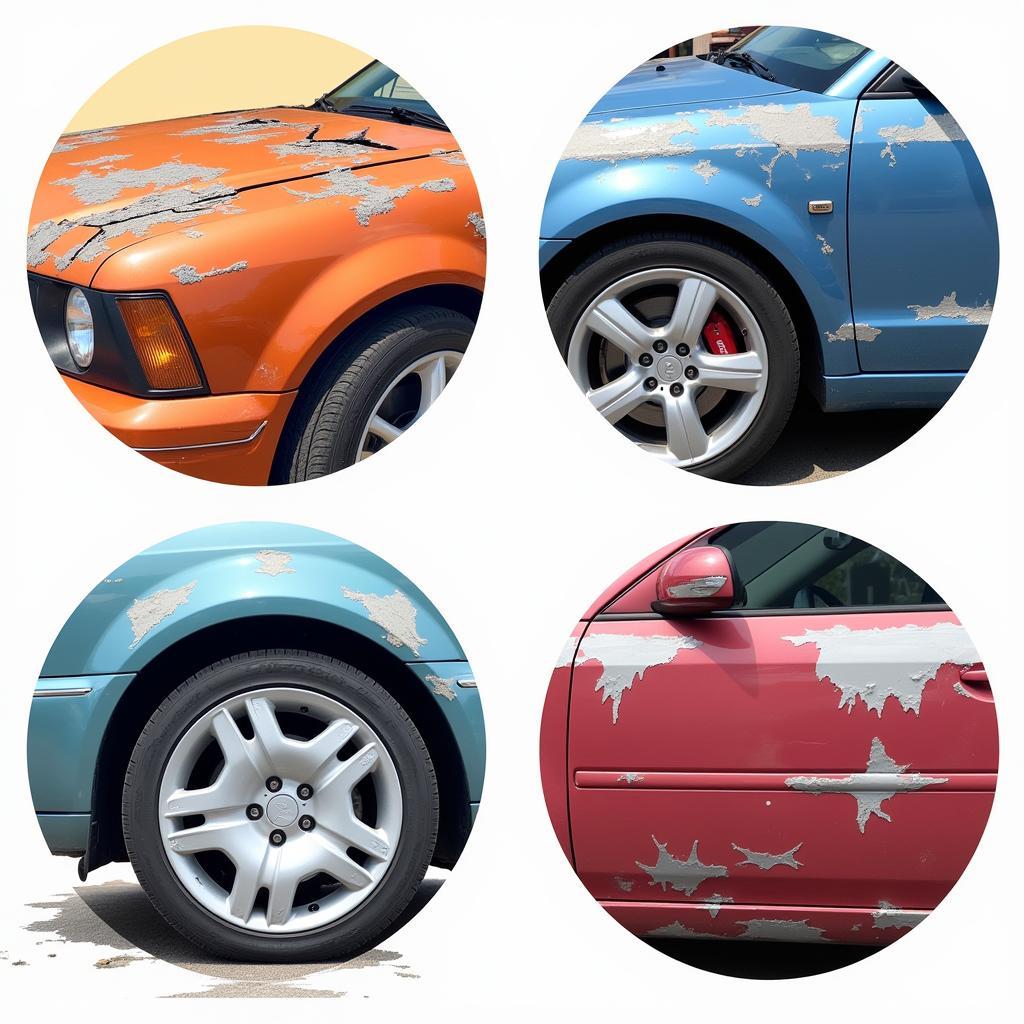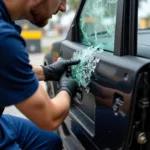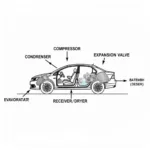Peeling paint isn’t just unsightly; it can expose your car’s metal to the elements, leading to rust and further damage. Knowing how to repair peeling paint on your car can save you money and keep your vehicle looking its best. This guide will provide a step-by-step process to tackle this common car problem.
You’ll need a few essential supplies before you begin, including sandpaper (various grits), primer, car paint that matches your car’s color, clear coat, masking tape, plastic sheeting, a tack cloth, and rubbing compound. A paint repair kit car can be a convenient way to get everything you need in one package.
Identifying the Cause of Peeling Car Paint
Before diving into the repair, it’s crucial to understand why your car’s paint is peeling. Common causes include sun damage, especially for cars parked outside frequently. Other factors include improper paint application, moisture getting under the paint, and even bird droppings or tree sap left on the surface for extended periods. Identifying the root cause can help prevent the issue from reoccurring after the repair. For example, if your car’s roof paint is peeling due to sun damage, consider using a car cover or parking in a shaded area. Check out our guide on repairing sun damage on car paint for more information on this specific issue.
Preparing the Area for Paint Repair
The first step in repairing peeling paint is to thoroughly clean the affected area with soap and water. Then, using sandpaper, carefully remove all the loose and peeling paint. Start with a coarser grit (e.g., 180-grit) and gradually move to a finer grit (e.g., 320-grit) to smooth the surface. Feather the edges of the remaining paint to blend seamlessly with the surrounding area. This step is essential for proper paint adhesion. If you notice corrosion beneath the peeling paint, you’ll need to address that first. See our article on car paint corrosion repair for guidance.
Priming and Painting
Once the area is sanded and cleaned with a tack cloth, apply a thin, even coat of automotive primer. The primer helps the new paint adhere to the surface and provides a uniform base. Allow the primer to dry completely according to the manufacturer’s instructions. Next, apply several thin coats of your car’s paint color, allowing each coat to dry before applying the next. Thin coats are crucial to prevent runs and ensure an even finish. If you’re unsure about matching your car’s color, a professional car paint repair service in your area can help. For example, if you’re in Burlington, search for “car paint repair Burlington” to find local experts.
Applying Clear Coat and Finishing Touches
After the final color coat has dried, apply a few coats of clear coat to protect the paint and give it a glossy finish. Once the clear coat is dry, use rubbing compound and a polishing pad to blend the repaired area with the surrounding paint, achieving a seamless and professional-looking result. Remember to follow the manufacturer’s instructions for drying times and application techniques for each product.
Preventing Future Paint Peeling
Regular washing and waxing can help protect your car’s paint from the elements. If you live in an area with harsh weather conditions, consider using a car cover. Addressing minor paint chips promptly can also prevent them from developing into larger areas of peeling paint. Car roof paint peeling repair can be especially challenging, so proactive measures are particularly important for this area.
Conclusion
Repairing peeling paint on your car might seem daunting, but with patience and the right approach, you can achieve professional-looking results. By following these steps and addressing the underlying causes, you can restore your car’s appearance and protect it from further damage. How to repair peeling paint on your car ultimately boils down to careful preparation, proper technique, and using quality materials.
FAQ
- Can I use any type of paint for car repairs? No, you should use automotive paint specifically designed for cars.
- Do I need to use primer? Yes, primer is essential for proper paint adhesion and a uniform finish.
- How many coats of paint should I apply? Several thin coats are better than a few thick coats to prevent runs and ensure even coverage.
- How long does it take for the paint to dry? Drying times vary depending on the product and environmental conditions; always follow the manufacturer’s instructions.
- What can I do to prevent paint peeling in the future? Regular washing, waxing, and addressing minor paint chips promptly can help prevent future peeling.
Need help with other car repairs? Check out our articles on a paint repair kit car and car roof paint peeling repair.
Need more assistance? Contact us via WhatsApp: +1(641)206-8880 or Email: cardiagtechworkshop@gmail.com. We have a 24/7 customer support team ready to help.



